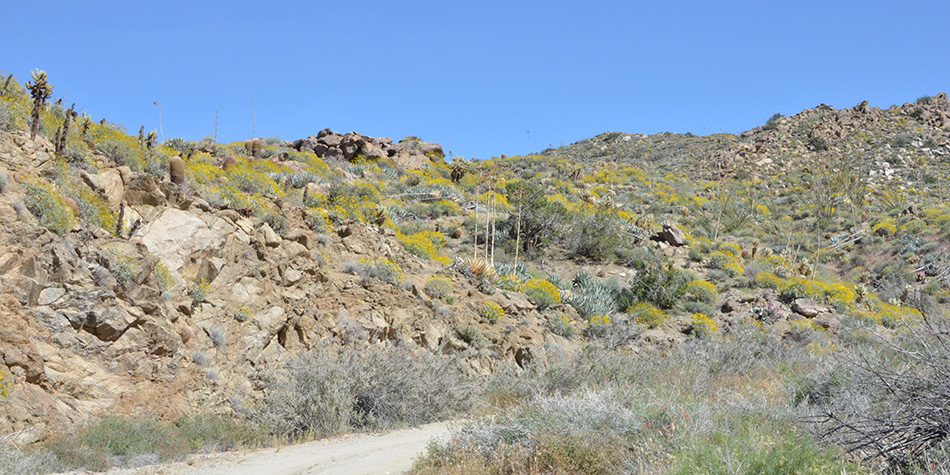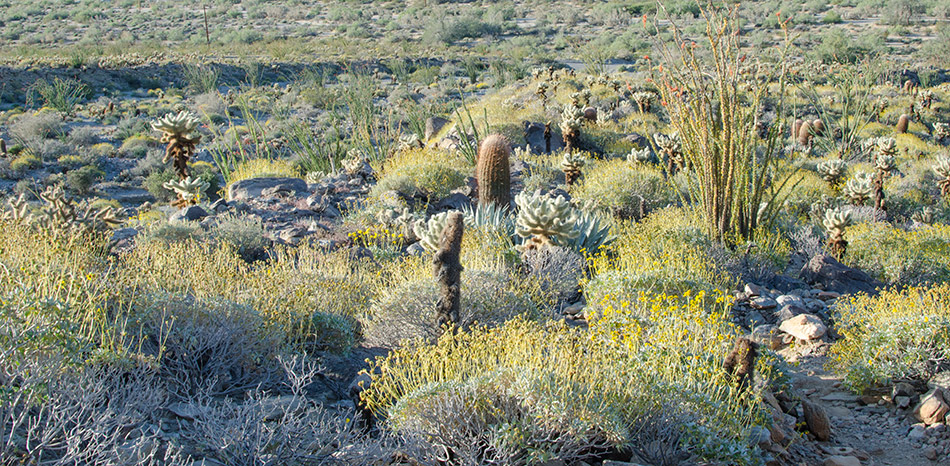

| Anza-Borrego Desert State Park,
California's largest state park, covers more than 600,000 square acres
encompassing parts of San Diego, Imperial and Riverside Counties.
It is part of the Colorado Desert, which is a sub-region of the Sonoran
Desert that extends into Arizona and Mexico. Due to good winter
rains (1) there
were a lot of flowers to be seen during this two-day visit to
Anza-Borrego in early April. Yellow clumps of brittlebush, red
streaks of ocotillo, and occasional bright cactus flowers dotted the
landscape, while hikes revealed many other plants in bloom.
According to a UC Irvine research center based here, there are more
than 900 plant taxa in the park. Bees,
butterflies and other insects were busy. More than 300 species of
birds visit the park; among those spotted were
phainopeplas and hummingbirds. Driving at dusk one is likely to
see jackrabbits bounding across the road, and I
came close to stepping on a rattlesnake.
We stayed overnight at the
Tamarisk Grove Campground. On the first day we hiked Plum
Canyon. The next morning I did the
Cactus
Loop Trail. We then did a hair-raising hike across the desert
looking for Smuggler's Canyon and the route up to Blair Valley. 1. For example, in Jan. 2017 there were 2.53 inches of precipitation compared to no rain in Jan. 2014, 0.31 inches in Jan. 2015 and 1.95 inches in Jan. 2016. |
| Anza-Borrego Desert State
Park Anza-Borrego Desert Natural History Association Anza-Borrego Foundation Steele/Burnand Anza-Borrego Desert Research Center (UC Irvine) Arizona-Sonoran Desert Museum Anza-Borrego Desert Wildflowers |

